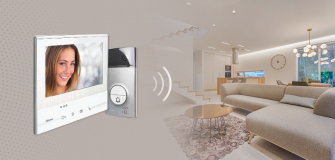Sensor Lights: How They Work & Which Ones Are Best For You?
Through the use of sensors or communication networks, such as a mesh network, the technology in a smart home works together to serve you. With only a simple voice command or the click of a button, your house can perform a number of tasks from your current location, like dimming the lights and drawing the curtains.
In a smart home, you may control all of the lighting and other appliances from a single location. In addition to analysing collected data and managing domestic tasks, smart homes also safeguard your home’s security by alerting you to unforeseen happenings.
Sensor Lighting

The most crucial elements of a smart home are lighting and lighting control systems.
When there is movement in a small space, a light control system may detect it and automatically have the lights turn on. It is an easy task that is a good example of a home automation setup.
How Do Sensor Lights Work?
A light controller circuit is connected to a motion detection sensor. The motion sensor activates the network when it detects motion in the area that the lighting controller is controlling. Suppose the motion sensor detects no activity for a predetermined amount of time as established by the lighting controller’s timer. In that case, the lighting controllers will automatically turn the lights off in the room.
The Several Advantages Of Using Sensor Lights

The most common motivations for purchasing motion sensor lights are listed below. Many people may find a motion-activated sensor light appealing for several reasons.
- It’s a great feeling never to have to turn on a light switch again
- It aids in lowering energy use. The lights will be off if nobody is home.
- It helps prevent burglars and prowlers. The use of outdoor motion sensor lighting deters crime.
- Motion sensor lights are advantageous for those with disabilities.
How Do You Select A Sensor Lighting System?
Consider the following factors when selecting your sensor device in order to choose the best and most practical sensor lights for your home:
- Brightness.
- Range
- A Wider Coverage
- Charging
You must carefully consider the sensor’s brightness because every sensor has different brightness characteristics. Dimmer LED sensor lights, like those in your bathroom, may be necessary if you don’t want to be greeted by a bright light when you wake up in the middle of the night. You might need a sensor that can produce light if you want to see clearly in the dark outside. You should get LED sensor lights with 300–150 watts of brightness, as indicated.
The range that the light covers should be your main concern before ordering sensor lights. It makes no sense to use up more energy on a high-range sensor if you don’t actually need it, you should choose the range of LED sensor lights based on your goals and requirements.
Next, pay attention to the width of the motion sensor’s mounted LED coverage area. The ideal LED sensor has a 40-foot maximum range.
It would help to consider how much energy the sensor devices use. The ability to charge LED sensor lights using sunlight is required if you want to install them outdoors, reducing power usage and utility costs significantly. If, however, that is impossible, purchase sensors with low energy consumption levels, as this is their primary function: conserve energy.
The benefits of sensor-based lighting include energy savings, increased home or business security, theft prevention, and never having to enter a dark, chilly house. All of the advantages mentioned above are present in addition to others in one of the most remarkable and unique sensor light collections available today from Legrand. The Legrand sensor lights listed below are the best, in our opinion.
- PIR Wall Mounted Lighting Management Sensors 180ø Infrared Detection, Range 20 M
- It is a surface-mounted device.
- Ideal for corner spaces.
- PIR Ceiling Mounted Lighting Management Sensors 360ø Infrared With Detection Angle Of 2 X 12 M
- It comes with mounting claws and is easy to install.
- Ideal for hallways.
- Neutral standby consumption.
- PIR Wall And Ceiling Mounted Multi Lens Lighting Management Sensors
- Multi lens lighting sensor feature.
- You can install it in corners.




















